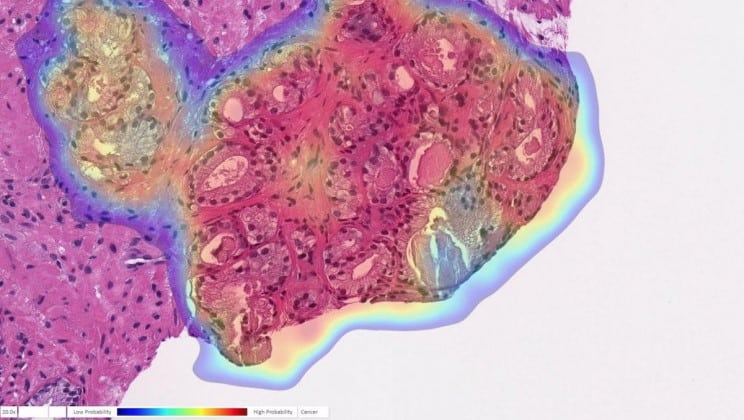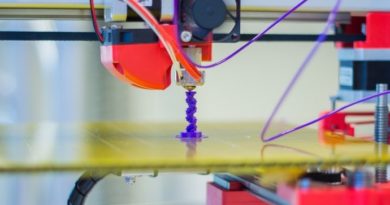New Prostate Cancer-Detecting AI Has Near-Perfect Accuracy
That colorful image above isn’t a grapefruit, it actually depicts a prostate biopsy with cancer probability — blue is low, red is high. In this particular case, the original diagnosis came back as benign. It was then changed to cancer after further review.
Artificial Intelligence (AI) developed by UPMC and University of Pittsburgh researchers was able to accurately detect cancer in this difficult case.
The scientists behind the system say it shows the highest accuracy to date in recognizing and characterizing prostate cancer using an AI program.
In a study published today in The Lancet Digital Health, the researchers detailed the impressive accuracy of their AI, and explained how humans display innate biases when it comes to medical care.
Humans are good at recognizing anomalies, but they have their own biases or past experience,” senior author Rajiv Dhir, M.D., M.B.A., chief pathologist and vice chair of pathology at UPMC Shadyside and professor of biomedical informatics at Pitt, said in a press release.
“Machines are detached from the whole story. There’s definitely an element of standardizing care,” he continued.
Dhir and his colleagues provided images from more than a million parts of stained tissue slides taken from patient biopsies in order to their AI to recognize prostate cancer.
Each of these images was labeled by expert pathologists in order to teach the AI how to distinguish between healthy and abnormal tissue. To make sure it worked, the algorithm was then tested on a separate set of 1,600 slides taken from 100 patients seen at UPMC with suspected prostate cancer.
During the testing process, the AI demonstrated 98% sensitivity and 97% specificity at detecting prostate cancer. This is much higher than previous algorithm researchers working from tissue slides have reported, the researchers say. In fact, the AI flagged six slides that were not noted by the expert pathologists that had analyzed the slides.
“Algorithms like this are especially useful in lesions that are atypical,” Dhir said. “A non specialized person may not be able to make the correct assessment. That’s a major advantage of this kind of system.”
While the results are very promising, Dhir cautions that new algorithms will have to be trained to detect specific types of cancer as pathology markers aren’t universal across all tissue types.
While that would be a lot of work, Dhir says that this would still be an effective way to complement human pathologists in detecting several types of cancer in the future.




